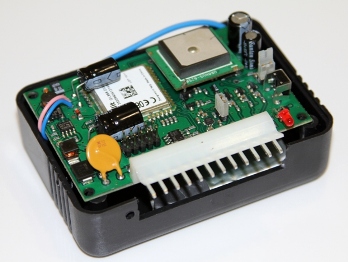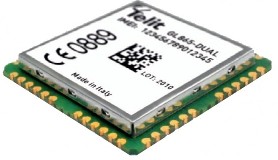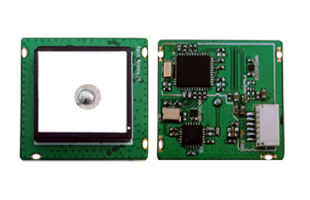High-quality gps monitoring for $ 150
 Good day!
Good day!In 2010, in the section “I am promoting” we told about our (at that time) flagship - gps tracker “ M2M-UA GPS ”. Notably, the model had a built-in Python interpreter and allowed the end user to create their own firmware versions. In late December 2011, we released a new model of our device, reducing the size, leaving the Python, and dividing the price by 2. Who cares - under the cat.
Harsh realities
3-4 years ago, the price of $ 350 for a monitoring device with the ability to connect fuel level (consumption) sensors, executive sensors and other goodies did not frighten anyone. But after China set new price levels, the market for this equipment changed, and it became extremely difficult to lure the end customer. At the moment, the manufacturer that has a high-quality monitoring service and an adequate price for its products wins.
GSM

The fact that we will use the Telit module as a GSM was not initially in doubt. Because porting software from one Telita to another is extremely simple and, of course, throwing the idea of “openness” of the equipment (although this time it was necessary to remove the programming connector inside to save space). After several years of warranty and not very good repairs, the last argument was the separation of GPS and GSM (the past device was on the “combined” GE863-GPS). The choice fell on a relatively new Telit GL868-DUAL chip, its main chip is SMT assembly, which allows you to change a failed module without any difficulties, and even diagnosing problems becomes much simpler (863 chips were on BGA legs, and the probability of raising and then put the module in working condition always sought to zero, primarily because of the “cake” of the module itself). Unlike its predecessor, the chip has become smaller, faster, but functionally weaker (the number of I \ O ports has been reduced several times).
GPS

It's more complicated. I wanted to find something
')
Characteristics of the GPS module itself:
- 68 channel receiver
- Hot start - 1 sec
- Cold start - 35 sec
- Ability to pick up coordinates by almanacs
- ~ 23 mA consumption
- Weight - 18 g
General functionality

As close as possible to the main device - three discrete inputs, 2 outputs for executable mechanisms, a digital input (for connecting digital boards and other devices with a digital puncture), as well as two inputs for connecting two analog sensors. The main difference from its predecessor is its small size and built-in GSM and GPS antennas. This allows you to install in a very short time + does not require special skills (you can power up through the cigarette lighter - then the device becomes extremely mobile, which allows control of the hired transport without tapping into the wiring).
Python Protocols and Self Development
In this device, as already mentioned, Python is used (a kind of, but very similar, example of firmware - I have already laid out, and this device is not an exception. This makes working with the device extremely flexible, and allows its implementation not only in the “normal” world gps monitoring, but also to any other industry related to the transfer of data from device to device.
This time we do not make secrets from the protocol, and anyone can make their own service to collect data from the device, you just need to configure IP (through the string, sms or through our service) where the data will be transmitted and configure the parser.
Cost of
The retail price per unit of equipment is $ 150 on the territory of Ukraine, and, most importantly, the price will be the same in the Russian Federation (the issue with delivery, warranty obligations, repair fund, etc.) is currently being resolved. At the moment, in search of representatives in Belarus, Moldova and other border regions.
Source: https://habr.com/ru/post/136097/
All Articles